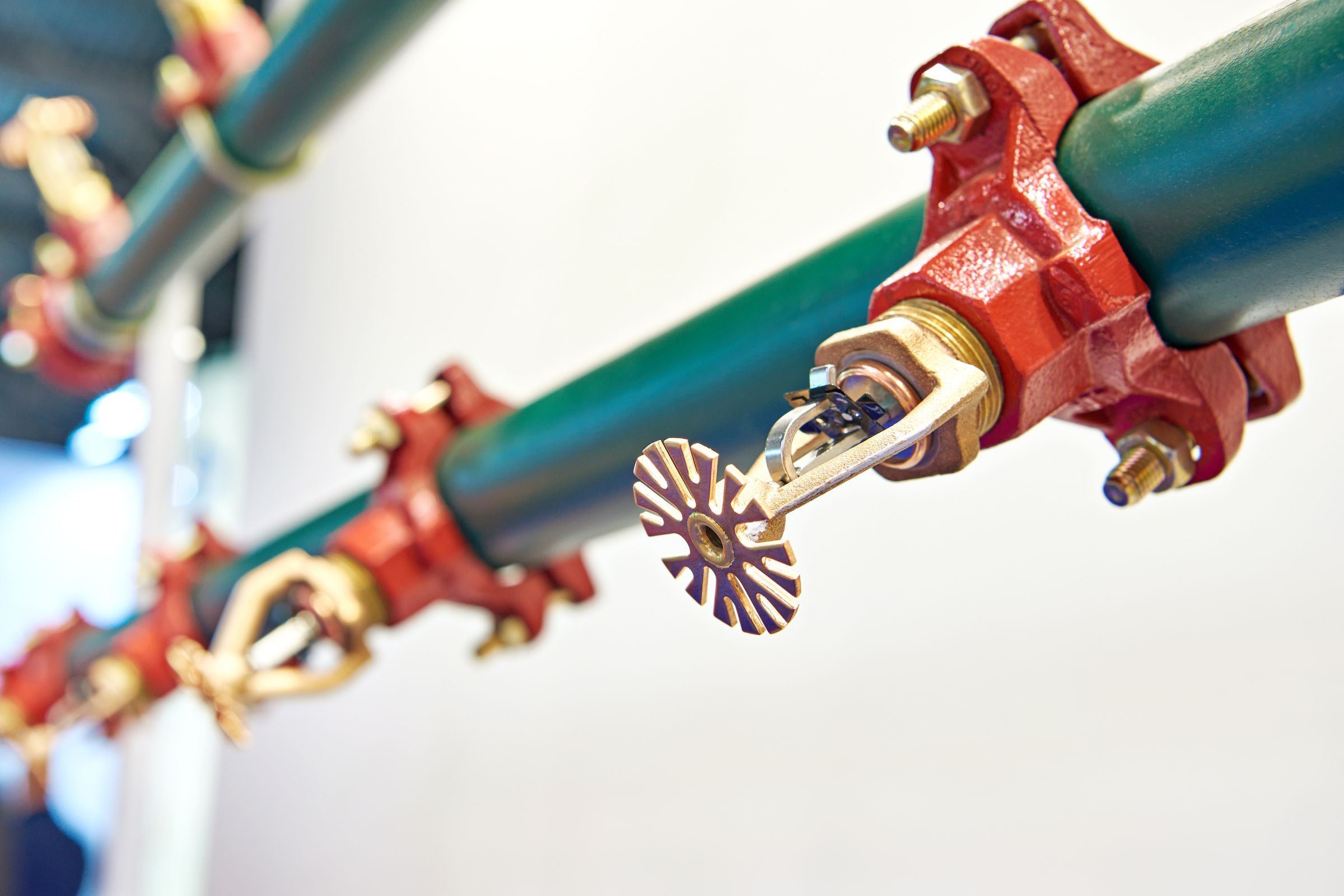Table of Contents
Related Articles
Does Your Sprinkler System Comply With NFPA’s Regulations?

The National Fire Protection Association (NFPA) provides guidelines for the installation of sprinkler systems in a standard called NFPA 13. It covers the design, installation and maintenance of automatic fire sprinkler systems to help protect buildings, and their occupants, from the dangers of fire. The standard addresses various aspects, including sprinkler types, system components, water supplies, and spacing requirements to ensure effective fire suppression.
NFPA standards are typically revised and updated every three to five years; the most recent update was in 2022. The next edition of NFPA 13 is expected to be released in 2025.
Recent Updates to the NFPA 13 Regulations
The 2022 edition of NFPA 13 included the below changes, and the 2025 update will continue to emphasize them:
- Philosophical change: NFPA 13 moved away from the use of density/area curves in favor of a single-point density design option for new systems. Single-point density curves simplify the sprinkler system design process. The method isn’t as precise as using density/area curves, but it makes the process easier and more suitable for various applications.
- Crackdown on exposed unexpanded/expanded group A plastics and intermediate bulk containers (IBCs): Insurance companies are requiring upgrades to pre-existing sprinkler systems with group A plastics and IBCs. Historically, IBCs have been used to store materials including parts, raw materials and ignitable liquids. The required upgrades are becoming industry standard, and there is no workaround. (Read about risks associated with IBCs below.)
- Ceiling height/rack storage: Storage occupancies require specialized fire protection. NFPA 13 limits ceiling height for ceiling sprinklers, and drop ceilings and in-rack sprinklers are becoming a necessity. Insurance companies will continue to require in-rack sprinklers if they deem it necessary. In combination with tighter restrictions on group A plastics, rack storage will continue to be a prevalent requirement, and there will also be more emphasis on occupancy, commodity classifications and storage arrangements.
- Flexibility with innovative system design: NFPA 13 provides guidance on how to incorporate new designs to expand coverage of sprinkler systems, and allows flexibility with sprinkler system design options. This, in combination with single point density, can give the insured more options to meet NFPA standards.
What This Means For Your Organization
Insureds should take NFPA guidelines seriously and comply with them. NFPA codes affect every industry, with special emphasis on manufacturing. The codes are updated every three to five years, and the issues above will continue to be addressed.
Risks Associated With IBCs
IBCs were originally engineered to reduce handling costs in the storage industry. Storing fluids and materials in IBCs can produce significant cost savings and operational efficiencies, but they can also pose a significantly greater spill hazard than a classic 55-gallon drum or smaller container. IBCs vary in size, typically between 119 and 793 gallons.
The main concern with IBCs is the ability for them to fail due to high heat exposure from a fire. When the plastic totes melt, the contents of the container can leak or spill out, adding more fuel to the fire. The same can happen when these containers are stored outside — the containers may suffer UV degradation and produce the same result.
NFPA permits only three types of IBCs in an industrial setting: metal, rigid and composite. Only flammable liquids with a flashpoint of 38°C (100°F) or higher are permitted to be stored in these containers. The IBC must be “listed and labeled,” meaning that it must pass the standards listed in Chapter 2 of the NFPA 30. A listed IBC must be tested for fire endurance. Unlisted IBCs have little fire protection and melt quickly during a fire, releasing the flammable contents. According to the NFPA, there are many IBCs on the market, but few are listed and labeled, creating a significant hazard.
To mitigate risks associated with IBC storage, it is recommended that insureds look into the following options:
- Prohibit IBC storage in plant production or warehouse storage areas
- Store IBCs at a supplier location and receive materials on a just-in-time basis
- Design and install a properly protected bulk storage pipe system
- Use 55-gallon drum storage or steel IBCs
- Store IBCs in contained storage areas away from the plant or in commercially available storage structures designed for handling IBCs
IBCs are always an issue if not located or controlled properly, especially when they contain flammable liquids. Insurers are scrutinizing these items heavily during their underwriting process. This impacts the fire rating from the underwriters and can make a risk completely undesirable, limit capacity or increase insurance rates.
- Overall Effectiveness: The National Fire Protection Association (NFPA) reports that in structures with functioning fire sprinklers, there’s an 87% reduction in civilian deaths, a 74% reduction in civilian injuries, and a 59% reduction in property damage.
- School Safety: According to the National Fire Data Center, in reported school fires between 2017-2021, there were zero civilian fire deaths in schools with functioning sprinklers.
- Cultural Institutions: Data from the National Endowment for the Arts suggests that fires are a leading cause of property damage in museums.
*Thank you to our friends at USI for the content in this piece.





